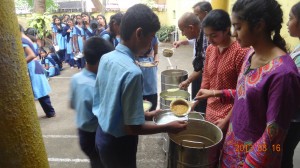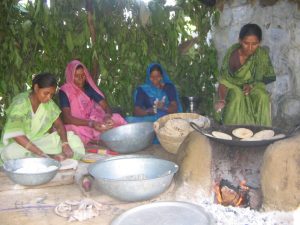
Every year begins with fresh promises and new challenges. It also makes us aware of our achievements and yet to achieve goals. The release of a recent government report in Times of India has brought to fore India’s status on achievement of UN Millennium Development Goals (MDG) by 2015. The report included details of poverty ratio, child mortality rate, malnutrition, and education rate.*
 India’s account was a mix of achievement and yet to achieve goals. Beginning with the achievements, the report stated that “India is likely to achieve 100% primary education and gender parity among children ahead of 2015. Achieving universal primary education is round the corner. With regard to gender parity the report states that it has already been achieved in primary education (in 2007-08 itself) and the disparity in secondary education is set to disappear by 2015. Yet, when it comes to poverty ratio, child mortality, hunger and malnutrition India is lagging behind and is likely to miss out on reaching the target figures. The report is indicative of the fact that even though we will miss out achieving the crucial development goals, India has shown a considerable improvement.”*
India’s account was a mix of achievement and yet to achieve goals. Beginning with the achievements, the report stated that “India is likely to achieve 100% primary education and gender parity among children ahead of 2015. Achieving universal primary education is round the corner. With regard to gender parity the report states that it has already been achieved in primary education (in 2007-08 itself) and the disparity in secondary education is set to disappear by 2015. Yet, when it comes to poverty ratio, child mortality, hunger and malnutrition India is lagging behind and is likely to miss out on reaching the target figures. The report is indicative of the fact that even though we will miss out achieving the crucial development goals, India has shown a considerable improvement.”*
This is where The Akshaya Patra Foundation’s role becomes more evident. Akshaya Patra is an Indian NGO based in Bangalore that is working towards achieving a hunger free and educated society. It implements the mid-day meal programme and provides food to children studying in Government and Government-aided schools. It is the world’s largest NGO run school lunch programme. Through this programme Akshaya Patra is countering two critical issues – hunger and education. It is also in accordance with the objectives of the Government Mid-day Meal Scheme:
- avoid classroom hunger
- increase school enrolment
- increase school attendance
- improve socialization among castes
- address malnutrition
- women empowerment
Currently functioning in 19 locations across 9 states, it provides food to 1.3 million children on all school working days. This programme has bought visible improvements in the health of the children. Below are a few instances of the impact Akshaya Patra’s mid-day meal programme had on the children:
- Principal of Government Higher Primary School Mangalore, Juliet Pinto states that “During health camps that are conducted thrice a year, the health supervisor found all the children to be healthy except general flu and common cold.”
- A teacher in a small village school of Bukkasagara (Bellary) says, “Many of my students hail from families of quarry workers. The health of the children has tremendously improved after regular food was being provided by Akshaya Patra.”
- Assistant Head Mistress of Government Higher Primary School- Ashokapuram (Mysore), Geetha Lobo says, “Prior to Akshaya Patra’s intervention through the mid-day meal programme, some children used to faint from hunger, but that’s no longer the case. The strength of the school has improved since food started being served here. Now, they attend classes regularly and concentrate better during lessons”.
- School in-charge of Rehmani Model Senior Secondary School Jaipur, Nazia Tazeem says, “The health of the children was a major concern. Today the mid-day meal in the school provided by Akshaya Patra has a positive impact on the children’s health. The mid-day meal has helped reduce drop-out rate and increase attendance and enrolment among girls.”
- Madhusudhan Mahapatra oversees Akshaya Patra’s de-centralized kitchens in Nayagarh, Odisha. He says, “In a state where nearly 46.8% of the population lives below the poverty line (Orissa has one of the highest figures for child mortality in the country)**, with high rates of child malnutrition, the fact that their children will get good food proves to be a strong catalyst for parents to send them to school. There has been an improvement in enrolment and attendance since the time Akshaya Patra started implementing the mid-day meal programme in the schools.”
**Food Security Atlas of Rural Orissa, 2008, a report by the UN World Food Program and the Institute for Human Development, New Delhi
*Source: Times of India-


















